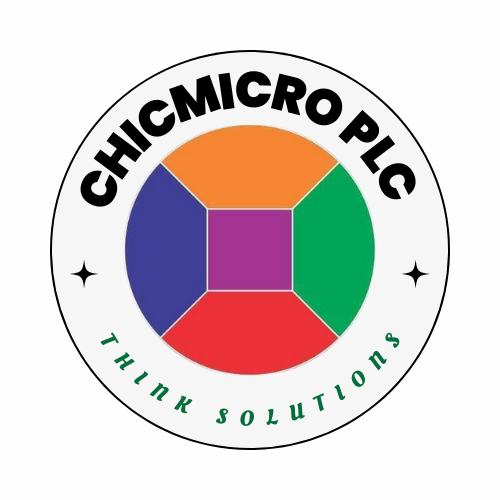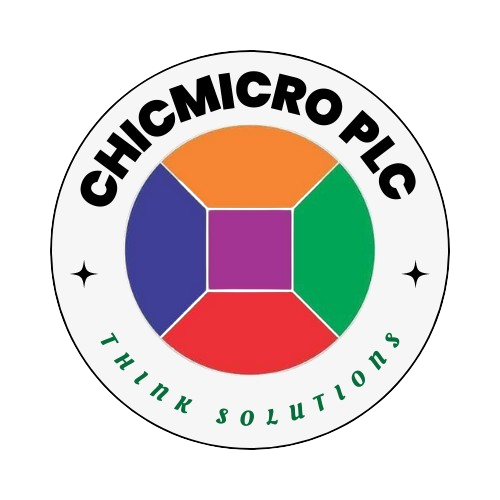
Introduction to Technology in Healthcare
In recent years, the impact of technology on healthcare has become increasingly pronounced, marking a transformative shift in how healthcare delivery and patient care are approached. The integration of advanced technologies into healthcare systems has not only streamlined processes but also greatly improved patient outcomes. Innovations such as telemedicine, electronic health records (EHRs), and artificial intelligence (AI) are redefining the roles of healthcare professionals and enhancing the overall patient experience.
The importance of these technological advancements cannot be overstated, as they facilitate more efficient communication between healthcare providers and patients, leading to timely interventions and better management of patient information. For instance, telemedicine has made it possible for patients to consult with healthcare providers from the comfort of their homes, reducing the need for physical visits and enhancing access to care. This is particularly significant for individuals in rural or underserved areas, where traditional healthcare resources may be limited.
Moreover, electronic health records have revolutionized the way patient data is stored and shared. These systems allow for seamless access to medical history and patient information, ensuring that healthcare professionals can make informed decisions quickly and efficiently. The use of AI and machine learning in diagnostics and treatment planning further exemplifies how technology is not only assisting healthcare providers but also enabling more personalized and effective patient care.
As we explore the various facets of technology in healthcare throughout this blog, it will become evident how these innovations are reshaping the landscape of medical practice. The implications of these advancements are vast, affecting everything from administrative efficiency to the quality of care received by patients. In this way, technology serves as a vital component in the ongoing quest to improve healthcare delivery and patient outcomes in an increasingly complex healthcare environment.
Telemedicine: Bridging the Gap in Care
Telemedicine has emerged as a pivotal element in the transformation of healthcare delivery, offering solutions that efficiently connect patients and healthcare providers. As technological advancements reshape the healthcare landscape, telemedicine enables remote consultations, allowing patients to receive medical advice from the comfort of their homes. This eliminates the challenges posed by geographical barriers, particularly for individuals residing in rural or underserved areas where access to healthcare services may be limited.
The rise of telemedicine has proven particularly essential during health crises, notably the COVID-19 pandemic. With social distancing requirements and the overwhelming pressure on healthcare facilities, telehealth services offered a safe alternative for patients seeking medical attention. Patients could consult with healthcare professionals through video calls, phone consultations, or secure messaging, ensuring continuity of care without the need for physical visits. This adaptation was crucial, as it minimized the risk of virus transmission while allowing patients to address their health concerns promptly.
Moreover, telemedicine enhances patient satisfaction significantly. By removing the need for travel and long waiting times, it provides a more convenient and efficient approach to healthcare. Studies have shown that patients appreciate the accessibility and flexibility that telehealth services offer, resulting in improved adherence to treatment plans and follow-up care. Additionally, telemedicine facilitates ongoing communication between patients and providers, leading to better management of chronic conditions and rapid response to emerging health issues.
In summary, the integration of telemedicine in healthcare delivery has acted as a bridge for many to access quality care. By leveraging technology, it not only alleviates the burden on healthcare systems but also enriches the patient experience, proving to be an indispensable tool in modern healthcare.
Electronic Health Records (EHR): Streamlining Patient Information
Electronic Health Records (EHR) have become an integral part of modern healthcare delivery, fundamentally transforming how patient information is managed, stored, and shared among healthcare providers. EHR systems enable a more accurate and efficient way to record patient data, moving away from the traditional paper-based methods. By digitizing health records, healthcare organizations can capture comprehensive patient information in a standardized format, which facilitates easier access and retrieval.
One of the many advantages of implementing EHR systems is the enhancement of communication among healthcare providers. With real-time access to patient records, physicians, nurses, and specialists can collaborate more effectively. This synergy is vital, especially when multiple providers are involved in patient care, as it minimizes the risk of medical errors due to incomplete or misinterpreted information. Additionally, EHR systems allow for secure sharing of information, enabling healthcare professionals to have a holistic view of a patient’s medical history, medications, and treatment plans.
Moreover, EHR systems contribute significantly to improving the overall quality of care delivered to patients. By streamlining patient information, healthcare professionals can make informed decisions faster, which can lead to better outcomes. EHR systems often also include reminders for preventive care and alerts for medication interactions, fostering a proactive approach to patient health management. However, alongside these benefits, the adoption of EHR systems is not without challenges. Implementing an EHR system can be resource-intensive and may face resistance from staff accustomed to traditional methods. Furthermore, concerns regarding patient privacy and data security arise, necessitating stringent measures to protect sensitive information.
In conclusion, the integration of EHR systems within healthcare settings is revolutionizing patient information management. Despite challenges such as implementation and privacy concerns, the benefits of improved accuracy, efficiency, and communication position EHRs as a crucial element in enhancing healthcare delivery and patient care.
Artificial Intelligence in Diagnosis and Treatment
Artificial Intelligence (AI) is transforming the landscape of healthcare by enhancing diagnostic processes and optimizing treatment strategies. One of the primary advantages of AI technologies lies in their ability to analyze vast quantities of medical data at unprecedented speeds. By employing sophisticated algorithms, AI systems can identify patterns and correlations within data that may not be immediately apparent to human practitioners. This capability significantly enhances the accuracy of diagnoses and enables healthcare professionals to make informed decisions based on comprehensive insights drawn from patient histories, imaging results, and clinical studies.
In recent years, various healthcare institutions have adopted AI-driven tools for diagnosing a wide array of medical conditions, from cancer detection in radiology to identifying cardiovascular diseases through predictive analytics. These tools leverage machine learning models that continuously learn from new data, improving their diagnostic precision and efficacy over time. By streamlining the diagnostic process, AI not only reduces waiting times for patients but also facilitates earlier interventions, which can be crucial for successful treatment outcomes.
Additionally, AI is instrumental in personalizing treatment plans. By integrating patient-specific data, such as genetic information, lifestyle factors, and previous responses to therapies, AI can recommend tailored treatment regimens that are more likely to yield favorable results. This proactive approach to patient care not only enhances the quality of healthcare delivery but also promotes improved patient engagement and satisfaction.
Despite its benefits, the implementation of AI in healthcare raises significant ethical considerations. Issues surrounding patient data privacy, algorithmic bias, and the potential for over-reliance on technology must be addressed to ensure that AI serves as a tool for enhancing human expertise rather than a replacement. These ethical concerns necessitate ongoing dialogue among healthcare professionals, technologists, and policymakers as AI’s role in diagnosis and treatment continues to evolve.
Wearable Technology: Monitoring Health in Real-Time
Wearable technology has emerged as a pivotal innovation in the healthcare industry, fundamentally transforming the way health metrics are tracked and managed. Devices such as smartwatches and fitness trackers allow patients to monitor various health parameters, including heart rate, physical activity, sleep patterns, and even blood oxygen levels in real-time. This real-time health data becomes invaluable for both patients and healthcare providers, enabling timely decisions and interventions that can significantly enhance patient outcomes.
One of the most significant benefits of wearable devices is their capacity to foster patient engagement. By placing health monitoring tools directly in the hands of individuals, wearables empower users to take an active role in their health management. Patients can receive immediate feedback on their physical activity levels or other vital statistics, encouraging healthier lifestyles and adherence to prescribed treatment plans. This proactive approach not only aids in the prevention of chronic diseases but also leads to improvements in overall well-being. The data collected by these devices can be seamlessly shared with healthcare providers, ensuring that interventions can be adapted based on real-time insights and tailored to meet individual patient needs.
Moreover, the rise of wearable technology has significantly impacted chronic disease management. With continuous monitoring capabilities, healthcare professionals can detect anomalies in health metrics early, making it possible to intervene before conditions escalate. For instance, abnormal heart rate readings can trigger automatic alerts to both patients and their doctors, leading to quicker and more effective response actions. Hence, wearable technology stands as a crucial tool in advancing personalized medicine, allowing for individualized strategies that cater specifically to patient health needs and preferences.
Robotics in Surgery: Precision and Efficiency
In recent years, the integration of robotics in surgical procedures has marked a significant transformation in the healthcare landscape. Surgical robotics, characterized by advanced automation and precision technology, has emerged as a key player in enhancing the efficiency and accuracy of surgical interventions. By leveraging robotic systems, surgeons can perform complex procedures with significantly improved dexterity, translating into better patient outcomes and heightened levels of care.
One of the most notable benefits of robotic-assisted surgery is its superior precision. Surgical robots, often equipped with high-definition 3D visualization and articulated instruments, allow surgeons to execute intricate maneuvers with unparalleled accuracy. This level of precision not only results in optimized surgical techniques but also minimizes the damage to surrounding tissues, which is crucial in delicate operations. As a result, patients experience reduced blood loss and a lower risk of postoperative complications.
Moreover, robotic-assisted surgeries generally lead to faster recovery times. Traditional surgical methods often necessitate longer hospital stays and extended periods of rehabilitation. However, due to the minimally invasive nature of robotic surgeries, patients are typically discharged sooner and return to their daily activities more rapidly. This advantage is especially beneficial in elective procedures where recovery speed can significantly impact patient satisfaction and overall healthcare costs.
While the advantages of robotics in surgery are apparent, it is also crucial to acknowledge potential drawbacks. The high costs associated with robotic systems and the requirement for specialized training for surgical teams can pose challenges to widespread adoption. Furthermore, some critics argue that reliance on robotics may lead to diminished hands-on skills among surgeons. Balancing these pros and cons is essential for maximizing the benefits of surgical robotics while ensuring a high standard of patient care.
Blockchain Technology: Ensuring Data Security and Integrity
Blockchain technology is emerging as a pivotal advancement in the healthcare sector, addressing major concerns around data security, privacy, and integrity of patient health records. At its core, blockchain functions as a decentralized ledger that records transactions in a secure and immutable manner, providing an innovative solution for the management of sensitive health information. This decentralized nature means that no single entity has control over the data, thereby enhancing its security and ensuring that patient records remain tamper-proof and trustworthy.
One of the most significant advantages of blockchain technology in healthcare is its capacity to enhance data integrity. Each transaction recorded on a blockchain is linked to existing block data, making alterations or sabotages almost impossible without the consensus of all parties involved. This characteristic makes blockchain an ideal medium for maintaining accurate and up-to-date patient records, which is crucial for medical history, treatment regimens, and ongoing care. Ensuring that healthcare providers have access to secure and accurate data can lead to improved patient outcomes and optimized decision-making processes.
Moreover, blockchain technology promotes secure information sharing among healthcare professionals while safeguarding patient privacy. By utilizing advanced encryption techniques, patient data can be shared in a controlled manner, allowing authorized personnel to access pertinent information without compromising confidentiality. This secure sharing functionality is vital in modern healthcare environments, where multi-disciplinary teams often collaborate on patient care. However, despite its promise, the implementation of blockchain in healthcare does face challenges such as regulatory hurdles, interoperability issues, and the need for technological infrastructure. Looking forward, with ongoing advancements and potential policy developments, blockchain could play a transformative role in revolutionizing healthcare delivery and enhancing the security of sensitive patient information.
The Role of Big Data in Predictive Analytics
In recent years, the role of big data in healthcare has grown exponentially, particularly in the realm of predictive analytics. By harnessing large datasets, healthcare organizations can uncover insights that drive improvements in patient care, operational efficiency, and clinical outcomes. Predictive analytics involves the use of historical data to forecast future events, offering healthcare providers the tools they need to make informed decisions.
One of the most significant applications of big data in predictive analytics is identifying trends and predicting disease outbreaks. By analyzing patterns in electronic health records, social media activity, and environmental factors, healthcare institutions can anticipate health challenges within populations. For instance, big data analytics can help identify areas experiencing increased rates of a particular illness, enabling proactive measures such as vaccination campaigns or public health interventions. This capacity to predict disease outbreaks not only enhances patient care but also optimizes resource allocation across healthcare systems.
Moreover, big data facilitates the personalization of patient care, allowing for tailored treatment plans based on individual risk profiles. Machine learning algorithms can assess a patient’s unique health history, genetic information, and lifestyle factors to forecast potential health issues. Thus, healthcare providers can intervene earlier, ultimately improving patient outcomes and minimizing healthcare costs.
However, the utilization of big data in predictive analytics also raises important ethical considerations. Privacy concerns regarding patient data protection are paramount, as the extensive collection and analysis of personal health information can lead to potential misuse if not managed carefully. Furthermore, the reliance on data-driven insights may inadvertently perpetuate biases present in historical datasets, resulting in disparities in care among different population groups.
In summary, the integration of big data into predictive analytics represents a transformative shift in healthcare delivery, offering unprecedented opportunities for enhancing patient care while also necessitating careful consideration of ethical implications.
Conclusion: The Future of Technology in Healthcare
As we reflect on the transformative power of technology in healthcare, it becomes evident that advancements have not only improved patient care but also redefined the delivery of healthcare services. Through the integration of telemedicine, electronic health records (EHR), artificial intelligence (AI), and wearable health devices, the healthcare landscape is witnessing a significant shift towards more efficient and patient-centered practices. These developments have enabled healthcare providers to offer timely and personalized care, enhancing patient outcomes and satisfaction.
Moreover, the role of data analytics cannot be overlooked. By harnessing the power of big data, healthcare professionals can gain insights into patient populations, track disease outbreaks, and even predict future health trends. This analytical approach fosters evidence-based decision-making, empowering providers to tailor their strategies to meet specific patient needs more effectively. The anticipation of these trends suggests that the healthcare sector is not static; rather, it is in a constant state of evolution driven by technology.
Looking ahead, the future of technology in healthcare is promising. We can expect innovations such as advanced robotics in surgery, augmented reality for enhanced medical training, and even more sophisticated AI systems that will continue to refine diagnostics and treatment plans. However, with these advancements come challenges, including issues of data privacy and the need for robust cybersecurity measures to protect sensitive health information. Addressing these challenges will be essential to foster a safe environment for both healthcare providers and patients.
In conclusion, continued investment in technological advancements is crucial for the ongoing improvement of healthcare delivery. As innovation accelerates, it is imperative for all stakeholders in the healthcare system to collaborate and embrace these changes, ultimately leading to improved health outcomes and a more efficient system for all.


